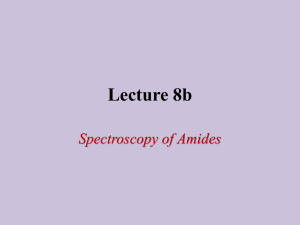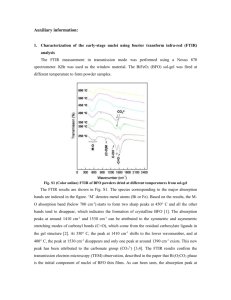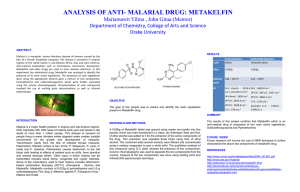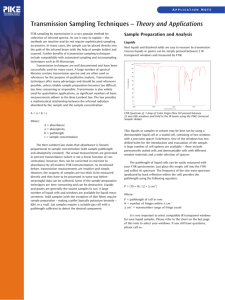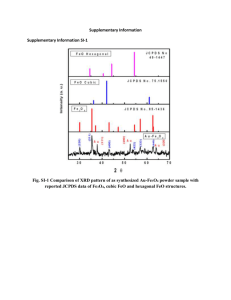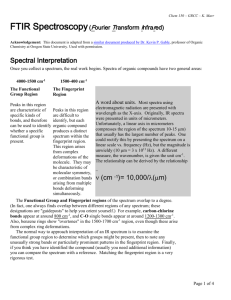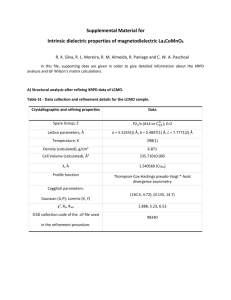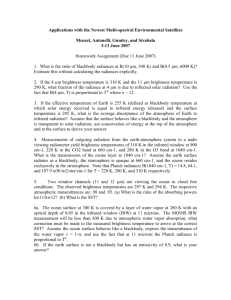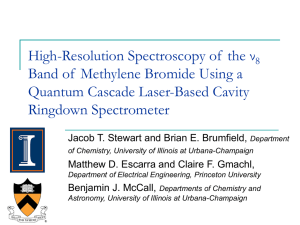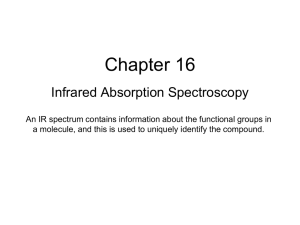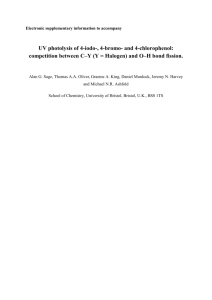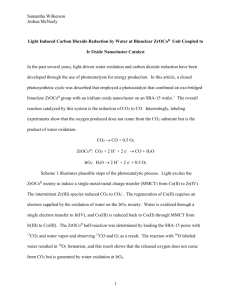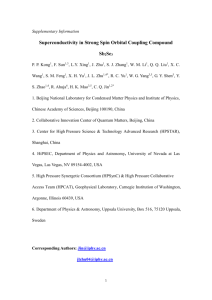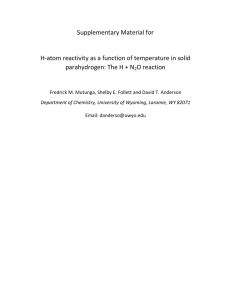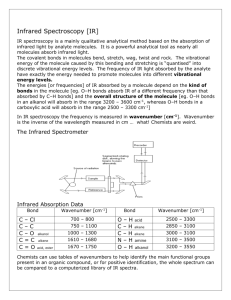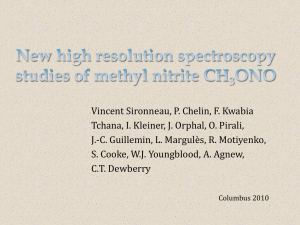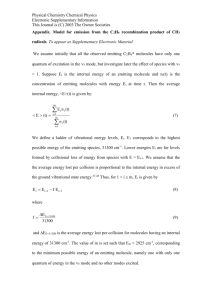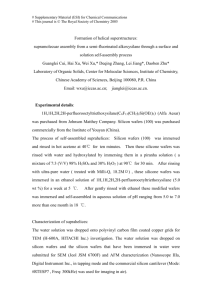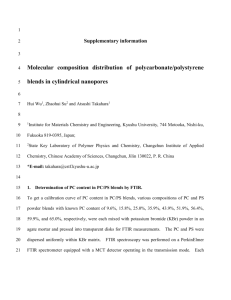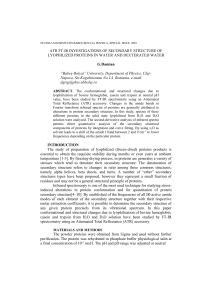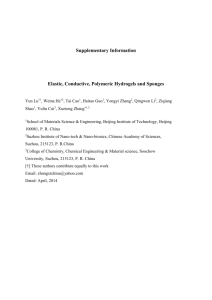(FTIR) is an analytical technique used to identify organic and in
advertisement
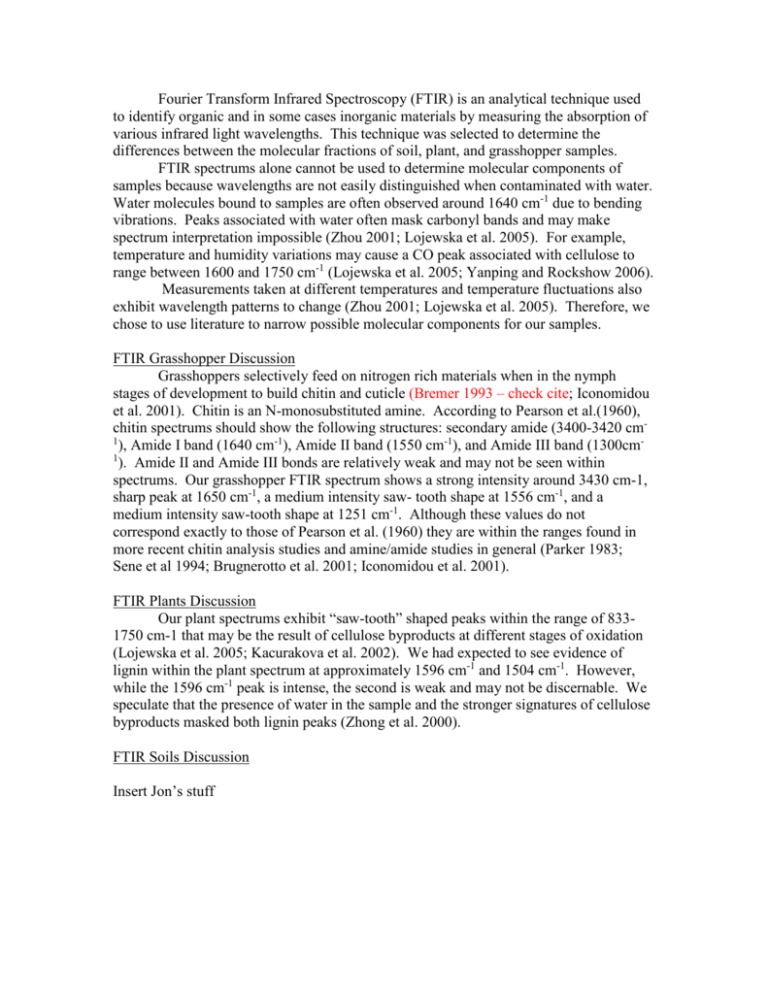
Fourier Transform Infrared Spectroscopy (FTIR) is an analytical technique used to identify organic and in some cases inorganic materials by measuring the absorption of various infrared light wavelengths. This technique was selected to determine the differences between the molecular fractions of soil, plant, and grasshopper samples. FTIR spectrums alone cannot be used to determine molecular components of samples because wavelengths are not easily distinguished when contaminated with water. Water molecules bound to samples are often observed around 1640 cm-1 due to bending vibrations. Peaks associated with water often mask carbonyl bands and may make spectrum interpretation impossible (Zhou 2001; Lojewska et al. 2005). For example, temperature and humidity variations may cause a CO peak associated with cellulose to range between 1600 and 1750 cm-1 (Lojewska et al. 2005; Yanping and Rockshow 2006). Measurements taken at different temperatures and temperature fluctuations also exhibit wavelength patterns to change (Zhou 2001; Lojewska et al. 2005). Therefore, we chose to use literature to narrow possible molecular components for our samples. FTIR Grasshopper Discussion Grasshoppers selectively feed on nitrogen rich materials when in the nymph stages of development to build chitin and cuticle (Bremer 1993 – check cite; Iconomidou et al. 2001). Chitin is an N-monosubstituted amine. According to Pearson et al.(1960), chitin spectrums should show the following structures: secondary amide (3400-3420 cm1 ), Amide I band (1640 cm-1), Amide II band (1550 cm-1), and Amide III band (1300cm1 ). Amide II and Amide III bonds are relatively weak and may not be seen within spectrums. Our grasshopper FTIR spectrum shows a strong intensity around 3430 cm-1, sharp peak at 1650 cm-1, a medium intensity saw- tooth shape at 1556 cm-1, and a medium intensity saw-tooth shape at 1251 cm-1. Although these values do not correspond exactly to those of Pearson et al. (1960) they are within the ranges found in more recent chitin analysis studies and amine/amide studies in general (Parker 1983; Sene et al 1994; Brugnerotto et al. 2001; Iconomidou et al. 2001). FTIR Plants Discussion Our plant spectrums exhibit “saw-tooth” shaped peaks within the range of 8331750 cm-1 that may be the result of cellulose byproducts at different stages of oxidation (Lojewska et al. 2005; Kacurakova et al. 2002). We had expected to see evidence of lignin within the plant spectrum at approximately 1596 cm-1 and 1504 cm-1. However, while the 1596 cm-1 peak is intense, the second is weak and may not be discernable. We speculate that the presence of water in the sample and the stronger signatures of cellulose byproducts masked both lignin peaks (Zhong et al. 2000). FTIR Soils Discussion Insert Jon’s stuff

